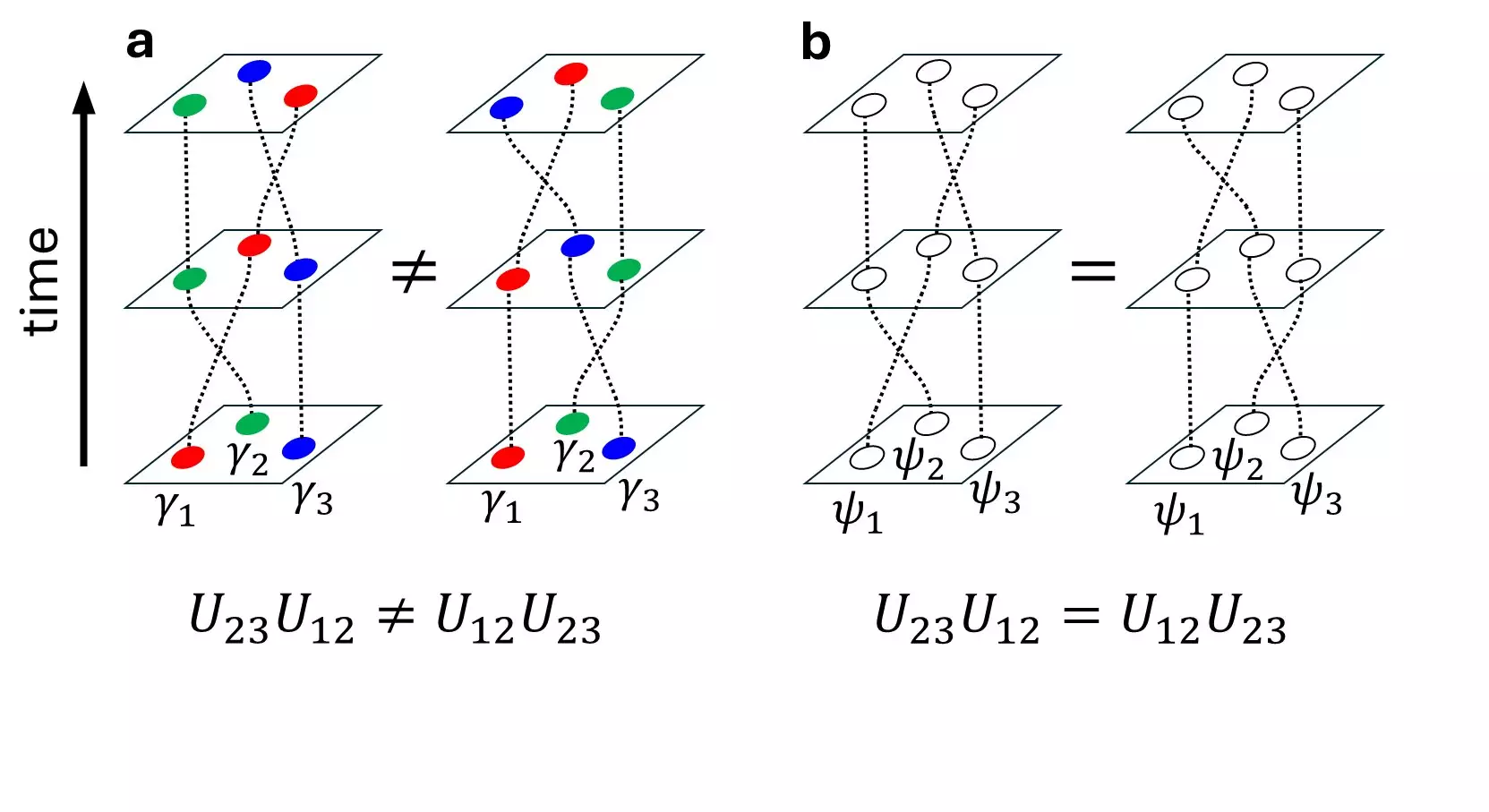A groundbreaking study, emerging from the collaborative efforts of researchers from the Hong Kong University of Science and Technology (HKUST) and Shanghai Jiao Tong University (SJTU), has unveiled the existence of multiple Majorana zero modes (MZMs) within a single vortex of the superconducting topological crystalline insulator SnTe. This finding, published in the prestigious journal *Nature*, not only marks a significant advance in the field of quantum physics but also illuminates a path forward for the development of fault-tolerant quantum computers. At the helm of this innovative research were Prof. Junwei Liu from HKUST, along with Profs. Jinfeng Jia and Yaoyi Li from SJTU.
The relevance of this research lies in the unique properties of MZMs, which are quasiparticles that exist at zero energy levels and are associated with non-Abelian statistics. Unlike conventional particles such as electrons, MZMs allow for distinct braiding operations that maintain different final states, irrespective of the number of exchanges. This characteristic renders them inherently resistant to local perturbations, making them an exceptionally promising platform for the realization of reliable quantum computation systems.
Despite the potential of MZMs for quantum applications, their manipulation has proven to be a daunting task, primarily due to their spatial separation in existing systems. Efforts to engineer artificial topological superconductors have advanced, yet the intricate processes required for the braiding and hybridization of MZMs remain complicated. The recent study turns the tide by harnessing the crystal symmetry associated with the MZMs, a strategic move aimed at bypassing the conventional limitations tied to real-space movements and the requirement for potent magnetic fields.
This innovative approach led to a pioneering demonstration of the existence and hybridization of multiple MZMs protected by magnetic-mirror symmetry within a single vortex of SnTe. By employing controlled experiments that do not necessitate movement in real space, the researchers minimized previous challenges, paving the way for new methodologies in detecting and manipulating these elusive quasiparticles.
The experimental achievements were bolstered by sophisticated methodologies, including low-temperature scanning tunneling microscopy, meticulous sample growth, and large-scale theoretical simulations. The SJTU experimental team noted significant variations in the zero-bias peak—a critical diagnostic feature of MZMs—within the SnTe/Pb heterostructure when subjected to tilted magnetic fields. These observations hint at a new understanding of MZMs and their interactions, solidifying their potential in the realm of quantum computing.
Following the experimental phase, the theoretical team from HKUST undertook extensive numerical simulations, which were crucial in clarifying that the observed anisotropic responses to magnetic fields were indeed direct manifestations of crystal-symmetry-protected MZMs. Using advanced techniques such as the kernel polynomial method, the researchers effectively simulated large vortex systems comprising hundreds of millions of orbitals, creating opportunities for further investigations into the exotic properties exhibited by vortex systems beyond the crystal-symmetry framework.
This research not only resolves existing issues in detecting multiple MZMs but also sets the stage for experimenting with non-Abelian statistics in practical settings. The practical implications of this work extend beyond mere theoretical interest, as it lays the groundwork for the development of new types of topological qubits and quantum gates that exploit the unique attributes of crystal-symmetry-protected MZMs.
As quantum computing moves closer to mainstream application, the promise of harnessing MZMs offers a remarkable opportunity to create stable, fault-tolerant systems that can transform various fields, from cryptography to complex system simulations. The significance of this discovery cannot be overstated; it heralds a vital advancement in the ongoing quest for robust quantum technologies that could redefine computation as we know it. The collaboration’s findings illuminate a bright path toward a future where quantum computing becomes more practical and secure than ever before.


Leave a Reply